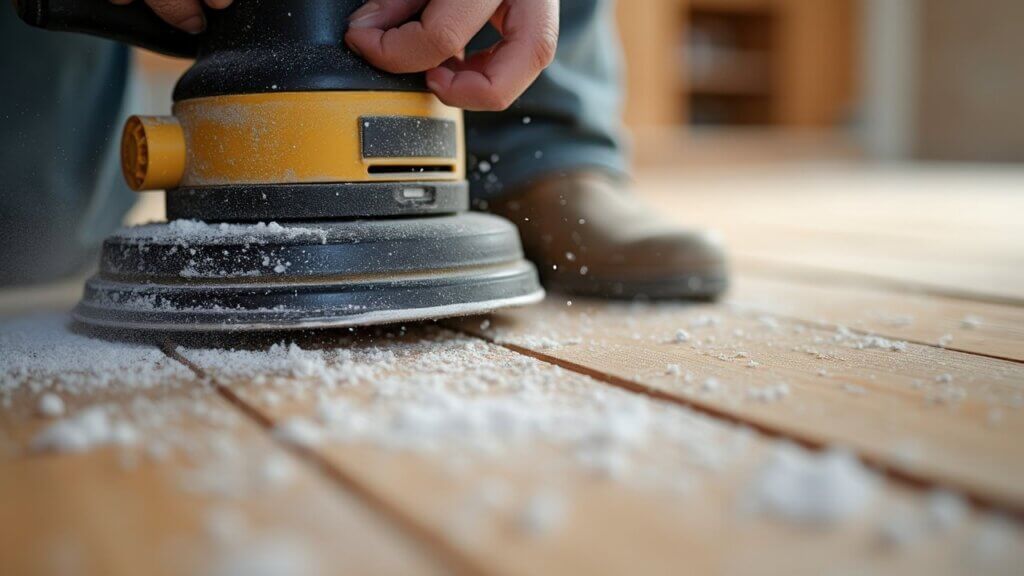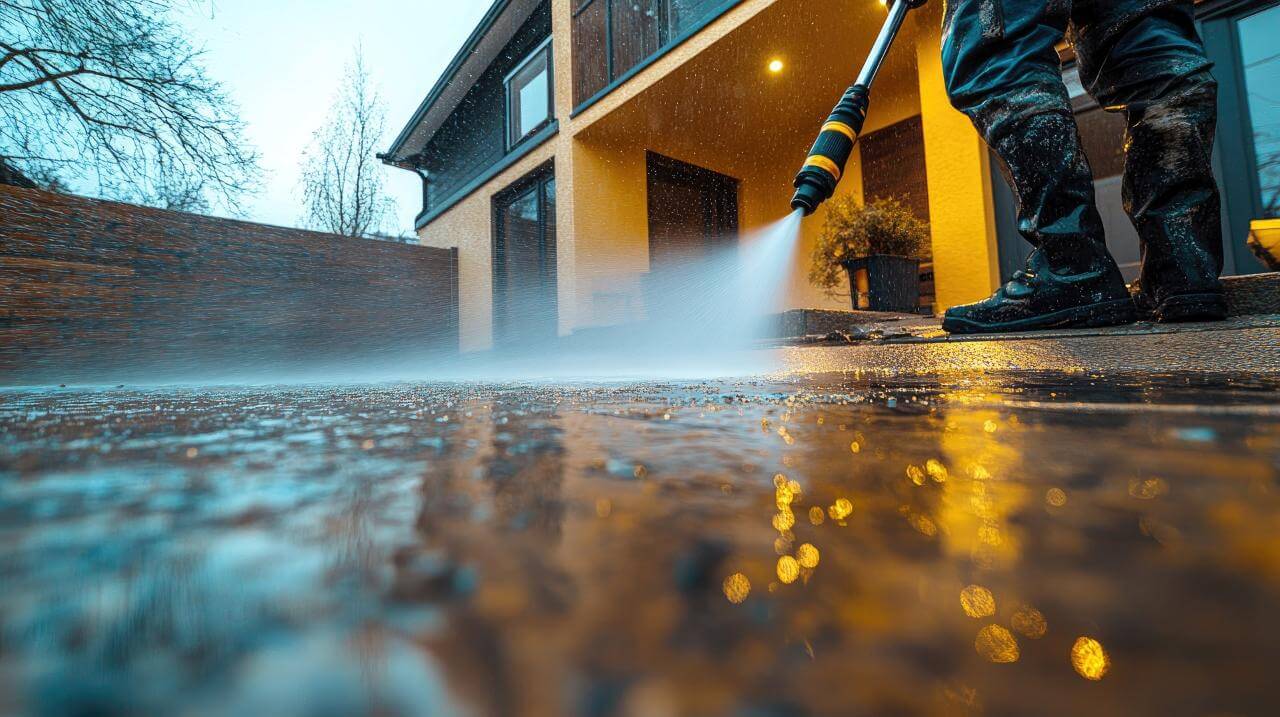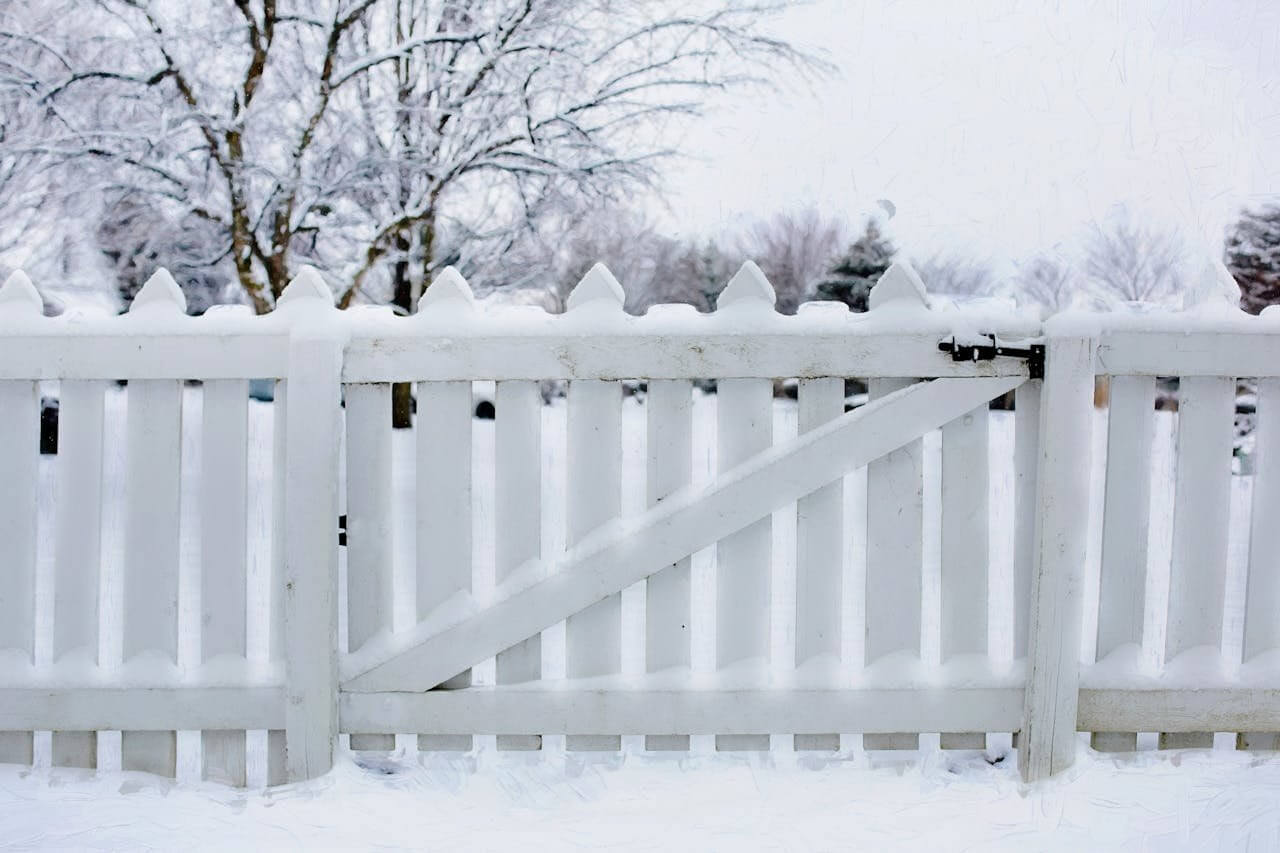
Do You Need Planning Permission for Cladding?
If you’re considering installing cladding on your home or in the garden, you’ve probably asked the question, ‘Do you need
Products in Stock
Lowest Prices
Express Delivery
10-Year Warranty
January Sale. Up To 15% Off.

Have you ever stepped onto your deck and felt the rough, weathered wood beneath your feet? It’s a common issue for deck owners, but fear not – we’ve got the solution. Sanding decking can transform it from a splintery eyesore to a smooth, inviting oasis, and in this 5-step guide we’re going to take you through the process, ensuring you’re equipped with the knowledge to rejuvenate your outdoor space.
Let’s face it – your deck takes a beating. From scorching sun to pelting rain, it’s constantly exposed to the elements. Over time, this exposure can lead to a worn, greyish appearance that’s far from appealing. Sanding the decking strips away this damaged layer, unveiling the fresh wood underneath and paving the way for a deck that looks as good as new.
Before you do anything, you need to make sure you have the proper safety gear and knowledge. This is non-negotiable, as working with power tools and abrasive materials can be very dangerous and overlooking the correct safety procedures could create serious issues. So we’ve outlined the necessary safety precautions to ensure that your deck sanding project is safe and productive.
Let’s start with what you should be wearing:
Ensuring your work area is safe is the next important step in sanding your deck. Here are some best practices for work area safety:
It isn’t hard to stay safe when sanding decking, it just requires being safety conscious. Follow these procedures, follow the instructions on every tool you use, and know your limits. If you encounter challenges beyond your expertise, do the smart thing and call a professional. By following this advice, you’ll be sanding decking safely in no time at all. Now here are our 5 easy steps to sanding your deck.
Before you roll up your sleeves and get to sanding, you’ll need to assemble your deck sanding toolkit. Here’s what you should have on hand:
| Power Sander | An orbital sander is typically the go-to for sanding decking. It’s user-friendly and delivers excellent results. For larger decks or particularly stubborn surfaces, a belt sander might be worth considering. |
|---|---|
| Sandpaper | You’ll want a variety of grits in your arsenal when sanding your decking. Start with coarse (60-80 grit), move to medium (100-120 grit), and finish with fine (150-180 grit). This progression ensures a smooth, professional finish. |
| Deck Cleaner | A good quality decking cleaner is essential for preparing your surface. It removes dirt, grime, and any lingering finish that might interfere with your deck sanding efforts. |
| Deck Sealant | After sanding, you’ll want to protect your handiwork; a high-quality deck stain or sealant is the final piece of the puzzle to ensure a lasting quality shine on your deck. |
Proper preparation is the unsung hero when you begin sanding decking. Whilst it may be tedious, don’t skip it out! It’ll make your life a lot easier later on. Here’s how to set yourself up for triumph in 4 simple ways:
Start with a thorough sweep to get rid of debris, leaves, and whatever else that would get in the way of your sanding. Get into those nooks and crannies between boards – they’re notorious hideouts for debris.
Apply your deck cleaner according to the manufacturer’s instructions. This step is crucial for removing embedded dirt that your sweeping couldn’t get to and preparing the wood for sanding.

While you’re cleaning, keep an eye out for any damage. Loose boards, protruding nails, or rot should be addressed before you start sanding your decking.
Once your deck is clean and dry, take a moment to organise your workspace. Ensure all power cords are safely out of the way to prevent any mishaps.
Now comes the transformative part – the sanding itself. This process requires patience, but the results are well worth the effort. Since you have three different types of sandpaper, there are naturally three stages to sanding your decking:
You’re in the home stretch! These final steps will ensure your deck is ready for its debut:
Use a leaf blower or soft brush to remove all sanding dust from your decking. Pay extra attention to corners and crevices where dust likes to hide.
Run your hand over the decking’s surface. If you find any rough spots, give them a quick once-over with fine-grit sandpaper to ensure your deck is as smooth as possible.
If you notice any issues like raised nail heads or splinters during this final check, now’s the time to address them before the final touches.
You’ve done the hard bit. Now’s the time to apply your chosen deck stain or sealant. If you’re unsure about the best approach, our guide on how to properly stain a deck can help you navigate this key step.
After applying your finish, resist the urge to use your deck immediately – we know it’s tempting after all that effort. But you need to allow ample time for it to dry completely. Typically, 24-48 hours will do, but always defer to the manufacturer’s recommendations.
Sanding grooved decking is a bit trickier, as you have all the difficult nooks to get into. To effectively sand a grooved deck, perform the main sanding as usual with an orbital sander and then use a detail sander or sanding sponge to get into the grooves. This will take a bit more time than regular decking, but if you leave the grooves, you’re leaving the job half done and it will show.
Congratulations! You’ve successfully navigated the world of deck sanding and are on your way to becoming a deck sanding master. Your outdoor space is now primed for countless summer barbecues, lazy Sunday mornings, and starlit evenings.
If you’ve found this process more challenging than anticipated, or if you’re considering a more low-maintenance option for the future, why not explore our range of high quality modern decking? These innovative materials offer the beauty of wood without the need for regular sanding and refinishing.
Remember, a well-maintained deck is more than just a part of your home – it’s an extension of your lifestyle. Whether you choose to sand your existing deck or upgrade to a low-maintenance alternative, the effort you invest in your outdoor space will pay dividends in enjoyment for years to come.

Our sample pack contains a sample piece of each colour currently available. Order your free sample pack today to compare the colours and get a true feeling of the Dino Decking range!

If you’re considering installing cladding on your home or in the garden, you’ve probably asked the question, ‘Do you need

If you’re looking to go all out this festive season, you might be looking for some fantastic Christmas garden ideas